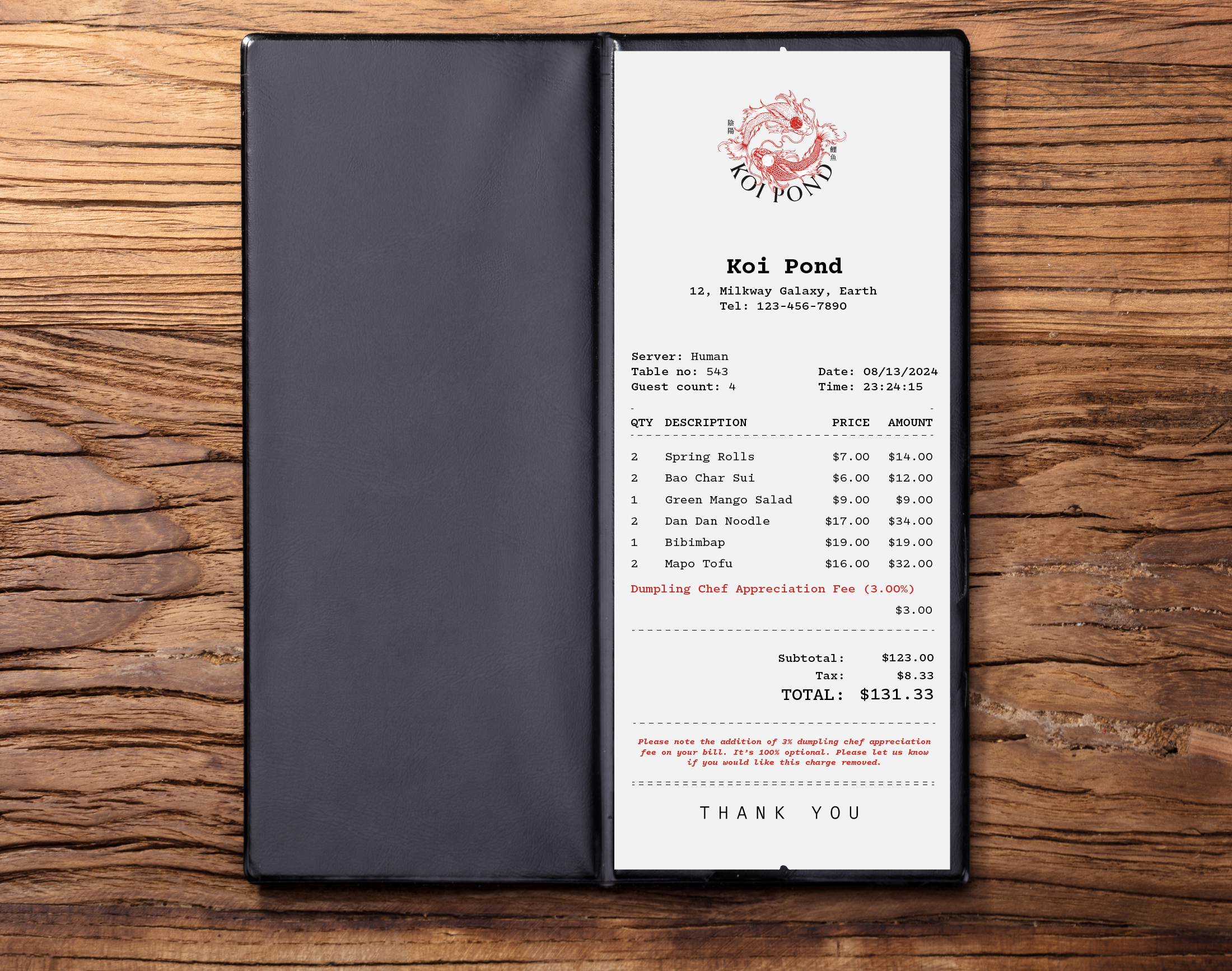
5 ways to make your restaurant surcharges more transparent

Between the delivery fees and rising food costs, customers have grown accustomed to seeing surcharges on their restaurant bill. Yet, that doesn’t mean they are happy about it—or even understand why they’re paying it in the first place. While some research suggests customers are less likely to return to a restaurant depending on the size of the fee, Popmenu found that the more upfront a restaurant is with their charges, the more likely a guest will be OK with spending the extra dough: 43% of consumers are open to restaurants charging a higher service fee (20%) if they know it’s to provide a livable wage to staff.
When it comes to presenting fees to customers, transparency is the name of the game. Customers embrace surcharges when restaurants are transparent about what guests are paying for and educate their staff on how to present those fees.
Typical restaurant fees added to the bill
During the pandemic, Covid surcharges and delivery fees became common additions in many restaurants. However, as the pandemic waned, restaurant fees only became more prevalent due to inflation, labor shortages, and an increased demand for better wages and benefits.
When customers see these fees on their bill, they could be for a number of reasons, including:
- To aid in covering general operational and food costs
- A more equitable way to distribute tips among servers
- Helping to close the gap on pay disparities between the front-of-house and back-of-house
- Contributing to higher base wages and health benefits
As altruistic as the intention of these fees may be, customers won’t perceive them that way if they are unclear about what they’re paying for. Instead, they see an unexplained fee, which is never welcome—especially at a time when customers are tightening their budgets.

How to present fees with transparency
To help your customers better understand where their money is going, here are some ways to create more transparency around added fees:
1. Educate staff … so they can educate customers
In order for guests to better understand surcharges, your staff must understand them first, so they can answer any questions honestly and confidently. If a customer asks their server why a fee was added to the bill and the server fumbles the answer, that will just turn the customer off from paying the fee or from returning to the establishment. By conducting training sessions, sharing informational material, and encouraging open dialogue between staff and management, your employees will be better able to educate and placate guests around added fees.
2. Spell it out
While this may seem like a simple gesture, it’s a meaningful one. Providing an upfront message on the menu or on restaurant signage about fees will make customers feel better about paying for said fees once they’re presented on the bill. For example, add a sentence at the bottom of the menu stating that the service fee allows for better wages and benefits for employees, or consider using more informal blurbs about how the fees can help “buy the staff a burger”.

3. Don’t be shy with the details
Wherever you choose to mention the fees, provide as much detail as possible about what they include. When including a surcharge on the bill, itemize all of the fees in a clear and concise way. Try to avoid ambiguous language such as "service charge" or "gratuity,” and instead specify exactly what the service charge is for, such as kitchen staff gratuity, a flat fee covering operational costs, or a sustainability surcharge to support eco-friendly initiatives.
4. Enable an ‘Opt-Out’ option
Oftentimes added fees may be required, but when possible, consider offering an opt-out option for guests. For example, if you’re asking for guests to add a Covid surcharge or additional dollars to cover tips more equitably, give them a heads up ahead of time that they can choose to remove those charges from the bill. By offering them the flexibility to opt in or out, they’ll often be more willing to add a little extra if asked.
5. Make it a two-way conversation
Communication is key when it comes to being more transparent with added fees. To that end, encourage an open dialogue with your customers via social media, email, or in person. You may even want to consider adding a Q&A or “live” session on your social platforms to discuss fee transparency. Whenever you adjust fees, whether adding or removing, be sure to communicate those changes proactively so customers aren’t caught by surprise.
Your guests come to your restaurant for a reason–whether it's the vibe, the food, the service, or all of the above. By being open and transparent about why you add fees to their bill, you’ll gain more loyal guests while enabling your restaurant to continue serving those guests for years to come.
Learn more about about how to gain trust with guests via smart marketing solutions.





.jpeg)






